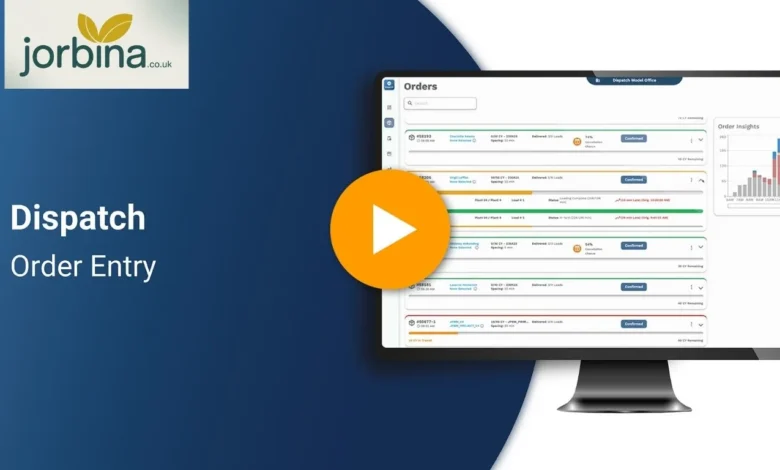Why Businesses Are Moving to Despatch Cloud in 2025

Have you noticed how fast online retail is evolving? Orders pour in from every direction, customers expect next-day delivery, and teams juggle multiple platforms at once. It’s exciting, but it’s also overwhelming. That’s exactly why so many businesses are switching to Despatch Cloud in 2025. It’s not just another piece of software; it’s a central hub that keeps your entire fulfilment process running in sync. Let’s break down why that matters, how it works, and what you should know before joining the movement.
The E-Commerce Puzzle Everyone’s Trying to Solve
Running an online store today isn’t just about selling products. You’re managing orders from multiple sales channels, tracking inventory across warehouses, coordinating with couriers, and making sure every parcel reaches customers on time. Even one missed update can trigger stockouts or delivery delays. That’s where Despatch Cloud comes in. It unites everything, from order intake to delivery, inside one clear system. Instead of toggling between spreadsheets and apps, you finally have one source of truth for your operations.
The Power of a Unified Platform
Dispatch Cloud eliminates the clutter that comes with juggling too many tools. It connects directly to major sales channels like Shopify, eBay, and Amazon while linking to dozens of couriers. Once you integrate your channels, the system automatically pulls in orders, updates stock levels, and prepares shipping labels. It’s all managed in real time. Imagine logging in and instantly seeing what needs packing, which couriers are ready, and which orders have gone out, all without switching tabs. That’s the level of clarity Despatch Cloud gives you.
Getting Started: Despatch Cloud Sign-Up and Login

The process begins with the Despatch Cloud sign-up. You create an account, verify your details, and then log in through the Despatch Cloud login page to access your dashboard. From there, you connect your online stores, add your courier accounts, and define rules for shipping or order priority. The platform’s design makes setup straightforward, even if logistics tech isn’t your strong suit. Once connected, your data syncs automatically. Whether you manage one store or ten, every update flows through Despatch Cloud’s network without delay.
Inside the Despatch Cloud App
The Despatch Cloud app gives warehouse teams a way to handle picking and packing directly from handheld devices. It’s simple to use and designed for real-time scanning, which means fewer errors and faster workflows. Staff can view order details, confirm items, print labels, and mark shipments complete, all from the same screen. This flexibility helps businesses maintain accuracy even during peak periods when speed is critical.
What Makes Despatch Cloud Different
lands, with the biggest strength of Dispatch Cloud lying in its automation and scalability. Many fulfilment systems start strong but buckle as your business grows. Despatch Cloud keeps pace. Its API allows developers to integrate custom tools, automate repetitive tasks, and connect external systems. The Despatch Cloud API is particularly useful for businesses that need bespoke features like automatic courier selection or advanced order routing. You can create rules that trigger specific actions the moment an order lands, with no manual work required.
Why This Shift Matters in 2025
Customer expectations in 2025 are sky-high. People want their orders processed instantly and delivered quickly, with constant visibility along the way. Any delay or mix-up can hurt your reputation. Despatch Cloud helps prevent that by giving you real-time insights and reducing friction between systems. Businesses are also facing more complexity: multiple marketplaces, international shipping, returns management, and changing carrier rules. The more complicated the logistics become, the more valuable a single control centre like Despatch Cloud is.
A Look Behind the Company
Dispatch Cloud isn’t a newcomer. It’s part of a larger organisation, THE DESPATCH COMPANY LTD overview, registered in the UK. This backing gives it credibility and a foundation for long-term growth. It also means ongoing product updates and support, something essential for any company relying on logistics technology. Their focus has always been connecting systems that don’t naturally talk to each other, helping brands streamline fulfilment without starting from scratch.
How It Fits Into a Larger Digital Shift
The move to Despatch Cloud is part of a wider transformation happening across industries. Businesses everywhere are adopting cloud-based platforms to increase agility and cut down on manual work. If you’re curious how this fits into the broader landscape, you can explore why Cloud Technology Partners lead in digital transformation. It shows how cloud infrastructure is reshaping operations and why logistics technology is becoming the backbone of digital commerce.
Typical Scenarios Where Despatch Cloud Shines

Multi-Channel Sellers
If your brand sells on several marketplaces, keeping inventory accurate across platforms can be a nightmare. Despatch Cloud synchronises stock automatically, preventing overselling or missed orders. That alone can save hours each week.
Fast-Growing E-Commerce Teams
When order volume spikes, manual processes break down. Despatch Cloud introduces automation so your systems scale without hiring an army of staff. Courier selection, order batching, and label creation can all run automatically.
Third-Party Logistics Providers
3PL companies managing fulfilment for multiple clients need visibility across warehouses and brands. Dispatch Cloud’s centralised dashboard lets you monitor each account individually while maintaining control over shared resources.
Setting Up for Success
Implementation takes planning. Start by mapping your current process: where orders come from, how stock is updated, and what causes delays. During onboarding, connect your key sales channels first, then add couriers and warehouses. Test everything before going live. The Despatch Cloud documentation offers detailed guidance on setup, mobile device recommendations, and troubleshooting. Investing a bit of time here ensures your system runs smoothly later.
Why Companies Are Making the Switch
The reason many businesses are moving to Despatch Cloud in 2025 isn’t just convenience; it’s control. Teams are tired of juggling platforms that don’t talk to each other. They want a single solution that handles the full order lifecycle, from purchase to delivery. Dispatch Cloud provides that cohesion. It replaces confusion with clarity and turns logistics into a competitive advantage rather than a stress point.
The Bigger Picture
Once your logistics platform runs smoothly, you can focus on strategy instead of damage control. Faster fulfilment leads to happier customers, which boosts reviews and repeat sales. Accurate inventory tracking means fewer refunds and stock issues. Over time, those small wins compound into major growth. Dispatch Cloud doesn’t just make operations cleaner; it helps you scale without chaos.
Final Thoughts
2025 is shaping up to be the year when businesses stop tolerating inefficiency in fulfilment. As e-commerce becomes more competitive, the margin for error keeps shrinking. Dispatch Cloud offers a straightforward path toward better control, speed, and visibility. It helps you unify your tools, empower your team, and deliver consistent service at scale. If you’re serious about growth, it’s worth exploring now rather than later.
FAQs
What is Dispatch Cloud?
It refers to Despatch Cloud, a UK-based cloud platform for order, inventory, and courier management. It brings together multiple systems into one dashboard to streamline fulfilment and improve accuracy.
What does “despatch” mean in shipping?
“Despatch” (or dispatch) describes the process of sending goods out for delivery. It includes picking, packing, labelling, and handing the parcel to a courier.
What are the 4 types of cloud services?
The main categories are Infrastructure as a Service (IaaS), Platform as a Service (PaaS), Software as a Service (SaaS), and Function as a Service (FaaS). Despatch Cloud falls under SaaS; it’s cloud-hosted and ready to use without local installation.
Who are Despatch Cloud’s competitors?
Competitors include platforms like ShipStation, Cloud Commerce Pro, and EasyShip. What makes Despatch Cloud stand out is its combination of automation, integration depth, and strong warehouse support.
What is an example of dispatch?
When a customer places an order, your team picks the item, packs it, generates a label, and sends it with a courier. That process, getting the product from your warehouse to the buyer, is dispatch. Dispatch Cloud helps automate and track that entire journey.



